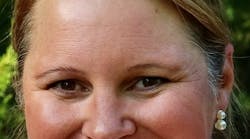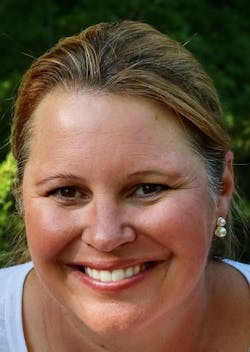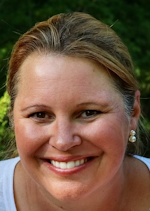It may sound cliché, but I think I’d have a nice passive income if I had a dime for each time a company contacted me about patient acquisition marketing.
It seems like 99% of my LinkedIn messages and emails guarantee me new patients. I politely wish them the best (they’re just doing their job) and focus on what I’ve discovered to be a more effective means of bringing new patients into my practice: free remote corporate screenings powered by teledentistry.
It may not be how you think teledentistry is typically implemented, but it can be a very effective marketing tool. I successfully used this technology to expand beyond the walls of my office to give on-site dental screenings for local companies. We provided an educational service to the community while obtaining high-quality patient referrals to my practice.
You can do this!
Selecting the best companies for conducting on-site screenings was based on an EagleSoft report that identified the top local employers whose employees made up my patient base. Based on this information, I sent the human resources (HR) department, whose contact information I obtained online, a description of what an on-site teledentistry screening entails. I explained that we would conduct an oral health examination using some of the latest technology, such as our VELscope oral cancer screening device (Apteryx), Diagnodent caries-detection device (KaVo), and the MouthWatch intraoral camera. I also provided additional information about the importance of oral health and its impact on total health.
Interested companies would call or email our office to answer follow-up questions and work out logistical details of the on-site screening, such as the date, location, and hours of availability.
Next, we provided a sign-up sheet and email for employees designed specifically for those without a current dental home or those who may be experiencing an emergency. We haven’t had any employees with a current dental home sign up, but our intention was not to step on any toes. In fact, if any individuals with a dental home were to sign up for the free screening, they would be referred to their current dentist.
We asked the company’s HR contact to hang a sign-up sheet in a common area, such as a break room, where employees could schedule a 30-minute screening appointment on a first-come-first-serve basis. When employees signed up, we sent them paperwork via email to fill out before their screening. The paperwork included a HIPAA form, a lawyer-reviewed disclaimer that this is only a screening (not a dental exam), patient registration, medical history, and dental survey.
I created the documents based on the ones in my office using PDF Filler, which is a HIPAA-compliant site that allows employees to fill out and sign forms online. Once they click the submit button, I am alerted that the forms are ready for my review.
I found the survey questions about why these patients don’t go to the dentist to be extremely valuable. We don’t often get insight into the minds of those who don’t see a dentist. These are the survey questions we asked:
- When was the last time you saw a dentist?
- What factors keep you from seeing a dentist?
- Do you believe that gum disease and cavities are preventable diseases?
- Do you have problems understanding your dental benefits if you have insurance?
On the day of the screening, my assistant would arrive with a box of gloves, cotton 2x2’s, and wipes for disinfecting equipment in a convenient case that also holds the other screening equipment and laptop.
I use MouthWatch’s TeleDent for the live-stream communication capability, along with the MouthWatch intraoral camera, which I can plug directly into my laptop. The TeleDent cloud-based software allows all previously uploaded patient paperwork to integrate seamlessly with the secure live-stream connection, along with any patient notes.
Never step foot in the companies you serve
Here’s the beautiful part: Thanks to teledentistry, corporate on-site screening days were normal days at the office for me. Between appointments, I would reserve some time to sit in my office and perform virtual real-time dental screenings. My dental assistant would be at the participating company’s location using the screening technology to gather and document the patient data. Thanks to the MouthWatch intraoral camera, I had better resolution to see more detail on a tooth than I have with my loupes.
I used the webcam on my laptop to have a face-to-face conversation with each patient to explain any issues or abnormalities that were identified during the screening and discuss the importance of following up with a dentist. I used this opportunity to address any questions and break down the barriers to care that the patient mentioned in the dental survey.
Our conversion rate for employees who scheduled an on-site screening was very high, with approximately 60% calling within a week to schedule a new-patient exam. Before each appointment, we would email directions to our office, an appointment reminder if appropriate, and, afterward, a thank-you letter with a summary of our findings and the importance of regular preventive care. I believe this teledentistry-enabled business model can be implemented by virtually any dental practice using the right platform.
Garnering company HR department buy-in for on-site oral health screenings is easy. Many corporations incentivize health prevention for their employees through methods such as points toward discounted insurance premiums, discounted gym memberships, and on-site clinics. They want their employees to stay healthy by receiving preventive dental care and are reaching out to the dental community for help. In short, local businesses enthusiastically embraced our free screening and education program, while I enjoyed a consistent stream of high-quality new patients.
Teledentistry offered another advantage that I wasn’t expecting. When chronic health issues forced me to sell my practice and start a new chapter as a dental speaker and consultant, teledentistry helped make my practice more attractive to prospective buyers and the current owner. Here’s why:
- My practice was very profitable.
- The new owner could implement several new revenue-generating business models.
- Existing patients enjoyed a higher level of convenience with positive experiences.
- Teledentistry set my practice apart from others in the same town.
I recommend implementing teledentistry whether you are equipping your first practice, in the midpoint of your career, or making a transition to retirement. It can enhance every phase of your career.








